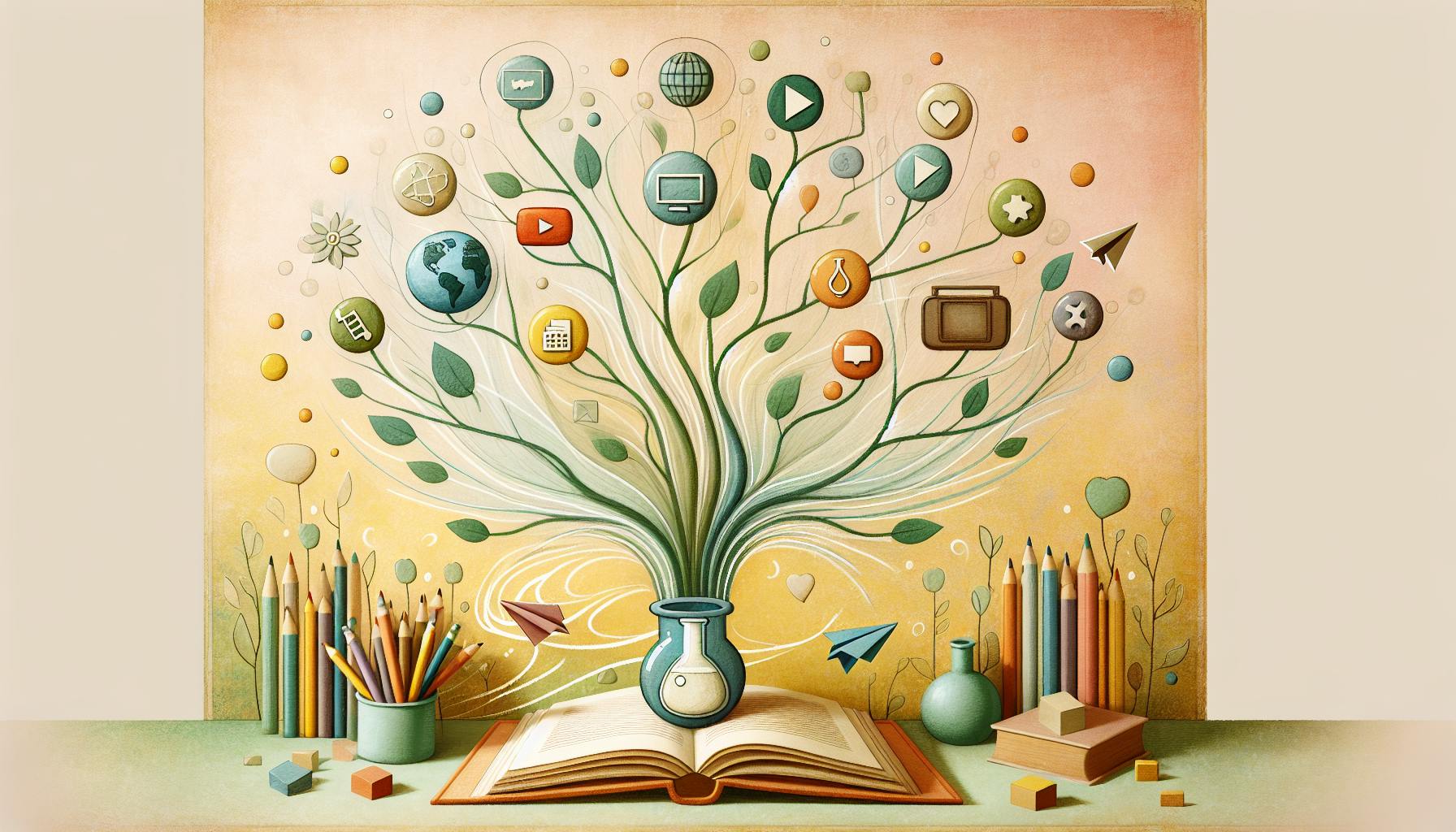We can all agree that analyzing complex literary works like "A Tale of Two Cities" can be challenging for students.
This article will provide educators with a clear framework for teaching key concepts from the novel, using targeted learning activities to aid comprehension and critical thinking.
You'll discover an overview of the historical backdrop that shaped the novel, dive into critical analysis of the main characters, and find ready-to-use student activities for comparing social classes, evaluating justice and revolution, and creative redemption writing prompts.
Introducing A Tale of Two Cities
A Tale of Two Cities by Charles Dickens is a historical fiction novel set during the time of the French Revolution in the late 18th century. As the title suggests, the novel depicts the stark contrasts between life in London and Paris during this tumultuous period.
About the Author - Charles Dickens
Charles Dickens was an acclaimed English novelist born in 1812, known for literary classics like Great Expectations, Oliver Twist, and David Copperfield. Having lived through challenging times during his childhood, Dickens developed a strong social conscience and desire to spotlight the plight of the poor and oppressed in society. This influenced much of his writing.
Historical Backdrop of the French Revolution
The novel provides a vivid glimpse into the tensions and violence that characterized the French Revolution, which began in 1789. There was rising discontent among the masses over high taxes and food shortages. This sparked a rebellion against the French aristocracy which soon descended into 'The Reign of Terror' - a period of chaos and bloodshed lasting several years under the new revolutionary government.
Themes of Injustice, Revolution and Redemption
Central themes in A Tale of Two Cities highlight societal injustices and the cycle of vengeance resulting from the French Revolution. It also touches on the possibility of resurrection and redemption. Several characters symbolize how individuals respond differently to adversity based on their circumstances and core values. Students can analyze these themes by evaluating how various characters' choices influence their fates.
What is the historical context of the tale of two cities?
A Tale of Two Cities by Charles Dickens is set during the turbulent years leading up to and during the French Revolution in the late 18th century. This was a time of great social and political upheaval in France that ultimately led to the overthrow and execution of King Louis XVI and the rise of Napoleon.
Dickens captures key events from this revolutionary period in the novel, including:
- The storming of the Bastille in 1789, which marked the beginning of the French Revolution. This iconic event signaled the start of the people's revolt against the French monarchy.
- The September Massacres of 1792, when around 1,300 prisoners were killed by angry mobs. This wave of violence reflected the volatile and chaotic atmosphere in France.
- The execution of King Louis XVI in 1793 after he was convicted of treason in a revolutionary trial. His death marked the definitive end of France's old ruling order.
- The Reign of Terror from 1793-1794, when suspected enemies of the revolution were swiftly condemned and guillotined. The radical leader Robespierre presided over this period of brutal repression.
By incorporating these pivotal historical events as a backdrop to his fictional story, Dickens creates an authentic sense of the social and political turmoil that characterized late 18th century France. This realistic historical context allows readers to better understand the motivations and experiences of characters caught up in the sweeping changes of the French Revolution.
How do you teach tale of two cities?
To begin, have students read the book independently and write a brief 5-section book report covering:
Characters
List and describe the major characters.
Book 1 Summary
Summarize the key events in Book 1.
Book 2 Summary
Summarize the key events in Book 2.
Book 3 Summary
Summarize the key events in Book 3.
Analysis
Analyze the major themes in the book.
After students complete their book reports, facilitate an in-class discussion analyzing how the historical context shaped characters and events. Guide students to make connections between fictional characters/situations and actual historical figures/events.
Then, have students get into small groups to create a skit, poem, drawing, or other creative work exploring one character in-depth. They should focus on analyzing how that character's traits and choices connect to broader societal issues and history.
Conclude with students presenting their group projects to the class. Hold a reflection discussion on key insights about historical context, human nature, and social dynamics.
What grade is tale of two cities taught in?
The classic novel A Tale of Two Cities by Charles Dickens is most commonly taught in grades 9-12 in high school English or literature classes. According to educational publishers, the book has an interest level spanning grades 5-12, but is written at a 9th grade reading level in terms of complexity and maturity of themes.
Here is a quick overview of the typical grade levels A Tale of Two Cities content is covered:
- Grade 9 - The novel is frequently part of 9th grade curriculum, either for general English classes, pre-AP/honors courses, or electives. It ties into analysis of complex literature from the romanticism and Victorian eras.
- Grades 10-12 - Upper level high school courses also study A Tale of Two Cities, diving deeper into historical contexts, literary techniques, and analytical character studies. It allows instructors to explore sophisticated themes with more mature students.
- AP Literature - Advanced Placement and college prep English courses often utilize this novel to prepare students for in-depth critical reading needed for college. It's considered a prime text for rhetorical analysis and understanding author purpose.
- Grades 5-8 - While less common, gifted programs or advanced middle school students may cover this novel as part of exploring classics above general grade level. It would focus more on plot summary and high-level comprehension.
So in summary, grades 9-12 are the prime levels, with 9th grade being the most popular for integrating A Tale of Two Cities into annual curriculum across public schools, private academies, and home school programs. The novel allows teachers to explore complex themes and analytical skills as students mature.
sbb-itb-bb2be89
Why A Tale of Two Cities is taught in schools?
A Tale of Two Cities by Charles Dickens is a staple in many high school English curriculums due to its rich literary value and thought-provoking exploration of timeless themes. Here are some of the key reasons why this classic novel is often taught in schools:
Historical Context
The novel provides a vivid window into the time period leading up to and during the French Revolution in the late 18th century. By transporting readers to tumultuous Paris and London, it allows students to understand the socio-political climate that contributed to the revolution against the aristocracy. Analyzing this historical context helps build critical thinking skills.
Complex Characters
The story features complex, dynamic characters like the heroic Sydney Carton and the vengeful Madame Defarge. Analyzing how personal histories shape their actions allows for rich discussion about motivation, redemption, and the complexity of human nature.
Themes of Injustice and Sacrifice
Central themes like the abuse of power, the struggle for justice, and the ultimate sacrifice made for the good of others resonate strongly with young readers. Exploring these inspires reflection on ethical issues relevant even today.
Literary Techniques
Dickens uses foreshadowing, symbolism, and doubling to great effect. Studying these techniques builds appreciation for skilled writing and storytelling.
By provoking thought on history, human nature, ethics, and literature itself, A Tale of Two Cities gives educators a multifaceted tool to stimulate young minds. Its continued popularity in schools is a testament to its pedagogical value.
Critical Analysis of Main Characters
Dr. Manette - The Fallen Nobleman
Dr. Manette's character represents how the innocent can become victims of injustice. As a doctor wrongly imprisoned for 18 years in the Bastille, he emerges a broken man who has lost his identity and purpose. His physical and mental state deteriorates as he mindlessly makes shoes to cope with the trauma. However, his restoration as a father figure gives him renewed meaning. His character highlights how even good people can suffer under corrupt systems.
Charles Darnay - The Conflicted Aristocrat
Charles Darnay renounces his aristocratic heritage but still gets caught up in the revolutionaries' thirst for vengeance. His willingness to turn away from privilege for principle earns sympathy. Yet his vain attempts to save his French relatives shows the complex ties between individual morality and collective responsibility during turbulent times. His character grapples with balancing personal ideals with pragmatic realities.
Madame Defarge - The Vengeful Revolutionary
Madame Defarge represents how legitimate desire for justice can turn into a dark force when unchecked. Her suffering under an unjust system stokes her hatred of the aristocracy. Though the reader understands her pain, her descent into merciless bloodlust also repels. Her character embodies how the oppressed can become as brutal as their oppressors when blinded by vengeance. She is the cautionary tale of revolutionaries who lose their way.
Using the Novel to Teach Key Concepts
Comparing Social Classes Activity
A great way to help students understand the complex social hierarchy depicted in A Tale of Two Cities is through an interactive mapping activity. Break students into small groups and have each group create a visual map of the different classes and factions in revolutionary France and England. As they read, students should take note of how different groups dress, live, work etc. Once complete, have groups present their maps to the class, explaining the differences and relationships between peasants, nobles, merchants etc. Open up a discussion about inequality, privilege, quality of life across classes. Extend the activity by having students reflect on how some of these class divides and disparities still persist today.
Evaluating Justice & Revolution Discussion
The violence of the French revolution is very graphic in Dickens' novel. To encourage critical thinking, structure a debate around the question "Was the revolution's violence justified?" Break students into two groups, one arguing yes and one arguing no. Have them cite examples from the text to back up their claims. Provide guiding questions for each side like: What were the most violent acts? What alternatives to violence existed? Was violence the only path to justice? What were the consequences of the violence? Were there any limits? After the debate, poll students for their individual views. Wrap up with a reflection on ethical issues around achieving justice through violent means.
Creative Redemption Writing Prompt
Dickens leaves some characters without clear resolutions. As a creative writing exercise, have students compose an additional final scene focused on redeeming one of these characters. Students should choose a character they sympathized with who meets an ambiguous end, like Sydney Carton, Charles Darnay or Lucie Manette. Instruct them to imagine a redemptive ending that brings the character happiness or closure. This can involve adding a new chapter, an epilogue, or a stand-alone scene. Have students focus on emotional impact and creativity. Peer editing can help students refine their pieces before final submission. This activity allows students to engage more deeply with characters while practicing creative writing skills.
Conclusion & Final Thoughts
Exploring complex literary works like A Tale of Two Cities through student activities provides significant learning opportunities. By analyzing the historical context and central characters, students build critical thinking skills. They learn to evaluate evidence, recognize different perspectives, and connect themes across time periods.
Creating activities around rich texts like Dickens' novel has many benefits:
- Students gain historical empathy and global awareness by examining revolution-era England and France. Comparing societies builds cultural literacy.
- Analyzing central characters like Sydney Carton boosts critical analysis abilities. Determining motivations and tracing development arcs exercises evaluative skills.
- Group discussions and creative projects allow students to synthesize ideas collaboratively. These activities reinforce comprehension and speaking abilities.
Overall, using A Tale of Two Cities as a case study for exploring historical contexts and characters deeply enriches students' literary analysis capacities. The novel's intricate themes prompt students to think critically and empathetically. By scaffolding activities around this text, educators meaningfully boost skills that prepare students to interpret literature and society.


